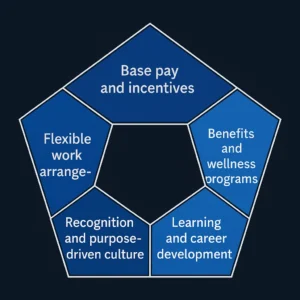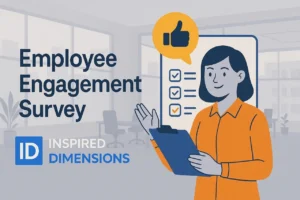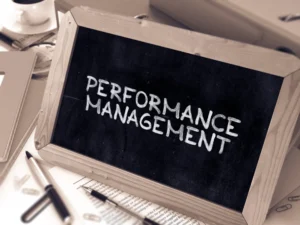The concept of total rewards has evolved significantly. Today’s employees seek more than salary and bonuses; they desire purpose, flexibility, wellbeing, and growth. Leading organizations are responding by transforming total rewards strategies to reflect these new expectations and enhance their competitive advantage.
 What is Total Rewards Strategy Redesign?
What is Total Rewards Strategy Redesign?
In today’s competitive job market, organizations must recognize that attracting and retaining top talent goes beyond salary alone. Comprehensive employee compensation encompasses various crucial elements designed to address diverse employee needs, enhance workplace satisfaction, and drive organizational performance. A holistic approach typically integrates these five key components:
This comprehensive approach aligns rewards with business objectives, enhancing employee experience.

Key Factors Driving Change:
– Generational Preferences: Millennials and Gen Z prioritize flexibility, career growth, and alignment with personal values.
– Remote and Hybrid Work: Shift towards skill-based rather than geography-based compensation.
– Wellbeing and Mental Health: Comprehensive health support beyond traditional benefits.
– Diversity, Equity, and Inclusion (DEI): Emphasis on pay equity, inclusive benefits, and equal opportunities.
– Technology and Data: AI-driven analytics enable personalized and responsive reward programs.
Core Components of Modern Total Rewards:
– Personalized Benefits: Tailored plans including wellness programs, mental health support, and caregiving resources.
– Skills-Based Compensation: Pay linked to capabilities and market data, adapting quickly to role evolutions.
– Recognition and Culture: Non-financial rewards, public recognition, and culture-driven appreciation significantly boost retention.
– Career Development: Continuous investment in skills enhancement, mentoring, and internal mobility.
– Equity and Inclusion: Ensuring fairness through pay equity audits and inclusive benefits fosters loyalty.
Strategic Steps for HR:
A solid rewards strategy attracts, engages, and retains top talent. Organizations should assess current practices, align rewards with values, involve employees, implement changes strategically, and monitor outcomes. This five-step framework helps refine a high-performing rewards strategy:
1. Audit and Analyze: Evaluate current strategies to identify gaps using data.
2. Define Employer Value Proposition (EVP): Align rewards strategy with organizational values and objectives.
3. Engage Employees: Use surveys and focus groups for co-creation to ensure relevance.
4. Phased Implementation: Gradually introduce changes, prioritizing high-impact initiatives.
5. Monitor and Refine: Regularly track progress, communicate clearly, and adjust strategies based on feedback.
Global Perspectives on Total Rewards:
Total rewards strategies vary globally, influenced by culture, economy, and legal systems:
| Continent | Key Features | Notable Trends |
|---|---|---|
| North America | Performance-based pay, individual achievement, healthcare dependency, flexible work and wellness. | AI in rewards, pay equity transparency, DEI benefits. |
| Europe | Work-life balance, job security, standardized benefits, strong regulation, public pensions & healthcare. | Remote work growth, social purpose and sustainability integration. |
| Middle East | Cash-based, tax-free packages, allowances (housing, transport, schooling), limited equity incentives. | Nationalization (e.g., Saudization), focus on wellbeing. |
| Asia-Pacific | Varies by market; emphasis on hierarchy, retirement funds, education support. | Digital HR platforms, employee experience focus. |
| Africa | Base pay, transport, data, medical aid; informal benefits; limited social security. | Local talent development, inflation challenges. |
| Latin America | Union-influenced pay, food vouchers, family allowances, 13th-month bonus, regulated structures. | Digital wellness, remote work, retention incentives. |
Our Thoughts:
As workforce dynamics change, reward strategies must evolve accordingly. Aligning rewards with contemporary values and priorities creates motivated, loyal employees essential for organizational success.
Glad to hear your views in the comments section below.






